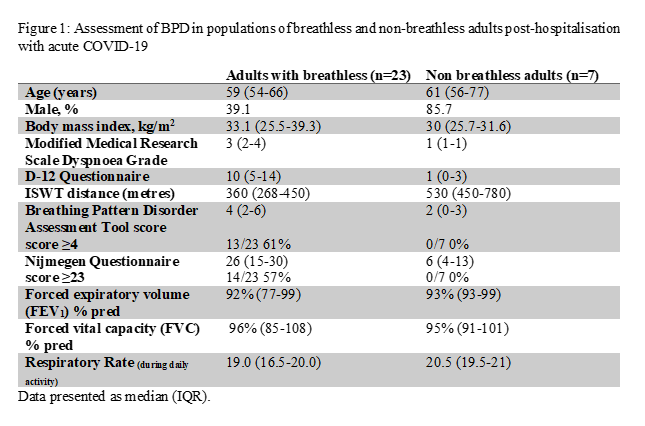Abstract
Background
Breathlessness is a common persisting symptom after COVID-19. The relationship between COVID-19, breathlessness and breathing pattern disorder (BPD) is not well explored.
Aim
To investigate the role of BPD in adults with and without breathlessness post-hospitalisation with COVID-19.
Methods
Adults with and without breathlessness (defined by MRC >1 or MRC =1 respectively) after hospital admission with COVID-19 were recruited and attended a research visit six months to two years after discharge. Breathlessness and BPD were assessed using Breathing Pattern Assessment Tool (BPAT), Nijmegen questionnaire (NQ), Dyspnoea-12 (D12), Incremental shuttle walking test (ISWT), spirometry, and average respiratory rate (RR) by wearing the Equivital EQ02+ LifeMonitor for 7 days.
Results
23 adults with breathlessness and 7 adults without breathlessness were recruited (Table 1). BPAT, NQ, D-12 and ISWT were significantly higher in the breathless group, whilst average RR, FEV1 and FVC % predicted were similar between the two cohorts.

Conclusion
These preliminary results show that breathing pattern disorder is contributing to post-covid breathlessness detected by the BPAT tool and Nijmegen questionnaire. Further analysis is needed to understand the relationship between breathlessness, BPD and RR during activities.